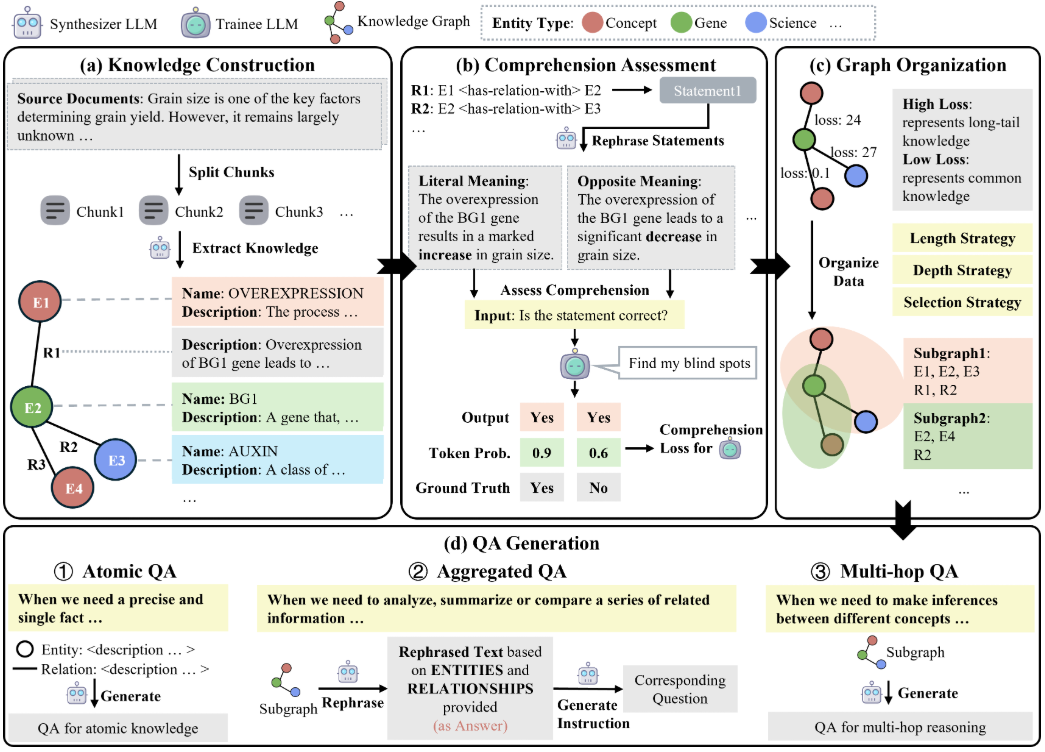The iText2KG core prompt command: extracting knowledge graph entity relationships and entities
A nice tool for building incremental knowledge graphs based on LLM: itext2kg
iText2KG is plug-and-play for a variety of scenarios, such as graphical conversion of scientific papers, websites, and resumes, with better performance than existing baselines
Features:
1, you can update the knowledge graph according to the new document, the new information will be integrated into the existing structure
2、No need to train for a specific domain, can extract knowledge across domains
3, contains modules for document extraction, entity extraction and relationship extraction, to ensure that the extracted entities and relationships are unique and parsed, to reduce errors and duplication of information
4, support for the extraction of entities and relationships integrated into the Neo4j database, and provide a visual interface
Extract entity relationships
Act like an expert in Information Extraction. If you don’t find the information, keep its place empty in the json. If the text is in English or French, translate it to English.
Question:
# Directives
- Adhere completely to the provided entities list.
- Do not add any entity outside the provided list.
- Extract ONE predicate per subject and object.
- ALL entities in the provided list should have a relation.
Format Instructions:The output should be formatted as a JSON instance that conforms to the JSON schema below.
As an example, for the schema `{"properties": {"foo": {"title": "Foo", "description": "a list of strings", "type": "array", "items": {"type": "string"}},"required": ["foo"]}}`
The object `{"foo": ["bar", "baz"]}` is a well-formatted instance of the schema.
The object `{"properties": {"foo": ["bar", "baz"]}}` is not well-formatted.
Here is the output schema:
```json
{
"properties": {
"relationships": {
"title": "Relationships",
"default": "Given the provided entities and context, try to find the predicates between these entities. They should be chosen carefully to accurately represent the relationship being expressed.",
"type": "array",
"items": {
"$ref": "#/definitions/Relationship"
}
}
},
"definitions": {
"Relationship": {
"title": "Relationship",
"type": "object",
"properties": {
"startNode": {
"title": "Startnode",
"default": "The start entity, found in the entities list",
"type": "string"
},
"endNode": {
"title": "Endnode",
"default": "The end entity, found in the entities list",
"type": "string"
},
"name": {
"title": "Name",
"default": "The predicate between the two entities. The predicate should encode ONE relation.",
"type": "string"
}
}
}
}
}
Answer:
Extract Entity Relationships Chinese version
充当信息提取专家。如果未找到信息,请在json中保留该位置为空。如果文本是英文或法文,则将其翻译为英文。
<上下文>
问题:
# 指令
- 完全遵循提供的实体列表。
- 不添加任何提供列表之外的实体。
- 每个主题和对象提取一个谓词。
- 所有提供列表中的实体必须有关系。
格式说明:输出应格式化为符合以下JSON模式的JSON实例。
例如,对于模式 `{"properties": {"foo": {"title": "Foo", "description": "a list of strings", "type": "array", "items": {"type": "string"}},"required": ["foo"]}}`
对象 `{"foo": ["bar", "baz"]}` 是符合该模式的格式良好的实例。
对象 `{"properties": {"foo": ["bar", "baz"]}}` 不是格式良好的。
这是输出模式:
```json
{
"properties": {
"relationships": {
"title": "Relationships",
"default": "根据提供的实体和上下文,尝试找出这些实体之间的谓词。应仔细选择以准确表示所表达的关系。",
"type": "array",
"items": {
"$ref": "#/definitions/Relationship"
}
}
},
"definitions": {
"Relationship": {
"title": "Relationship",
"type": "object",
"properties": {
"startNode": {
"title": "Startnode",
"default": "起始实体,见于实体列表",
"type": "string"
},
"endNode": {
"title": "Endnode",
"default": "结束实体,见于实体列表",
"type": "string"
},
"name": {
"title": "Name",
"default": "两个实体之间的谓词。谓词应编码一个关系。",
"type": "string"
}
}
}
}
}
答案:
extractive entity
Act like an expert in Information Extraction. If you don’t find the information, keep its place empty in the json. If the text is not in English or French, translate it to English.
Question:
Format Instructions:The output should be formatted as a JSON instance that conforms to the JSON schema below.
As an example, for the schema `{"properties": {"foo": {"title": "Foo", "description": "a list of strings", "type": "array", "items": {"type": "string"}},"required": ["foo"]}}`
The object `{"foo": ["bar", "baz"]}` is a well-formatted instance of the schema.
The object `{"properties": {"foo": ["bar", "baz"]}}` is not well-formatted.
Here is the output schema:
```json
{
"properties": {
"entities": {
"title": "Entities",
"default": "All the entities presented in the context. The entities should encode ONE concept.",
"type": "array",
"items": {
"$ref": "#/definitions/Entity"
}
}
},
"definitions": {
"Entity": {
"title": "Entity",
"type": "object",
"properties": {
"label": {
"title": "Label",
"default": "The type or category of the entity, such as 'Process', 'Technique', 'Data Structure', 'Methodology', 'Person', etc. This field helps in classifying and organizing entities within the knowledge graph.",
"type": "string"
},
"name": {
"title": "Name",
"default": "The specific name of the entity. It should represent a single, distinct concept and must not be an empty string. For example, if the entity is a 'Technique', the name could be 'Neural Networks'.",
"type": "string"
}
}
}
}
}
Answer:
Extract Entity Chinese version
扮演一个信息提取专家。如果找不到相关信息,请在JSON中将对应位置保留为空。如果文本不是英语或法语,请将其翻译成英语。
问题:
格式说明:输出应该格式化为符合以下JSON模式的JSON实例。
例如,对于模式`{"properties": {"foo": {"title": "Foo", "description": "a list of strings", "type": "array", "items": {"type": "string"}},"required": ["foo"]}}`
对象`{"foo": ["bar", "baz"]}`是该模式的格式正确的实例。
对象`{"properties": {"foo": ["bar", "baz"]}}`格式不正确。
以下是输出模式:
```json
{
"properties": {
"entities": {
"title": "实体",
"default": "上下文中出现的所有实体。每个实体应该表示一个独立的概念。",
"type": "array",
"items": {
"$ref": "#/definitions/Entity"
}
}
},
"definitions": {
"Entity": {
"title": "实体",
"type": "object",
"properties": {
"label": {
"title": "标签",
"default": "实体的类型或类别,如'过程'、'技术'、'数据结构'、'方法论'、'人物'等。此字段有助于在知识图谱中对实体进行分类和组织。",
"type": "string"
},
"name": {
"title": "名称",
"default": "实体的具体名称。它应代表一个单一的、明确的概念,且不能为空字符串。例如,如果实体类型是'技术',名称可能是'神经网络'。",
"type": "string"
}
}
}
}
}
回答:
© Copyright notes
Article copyright AI Sharing Circle All, please do not reproduce without permission.
Related articles

No comments...




